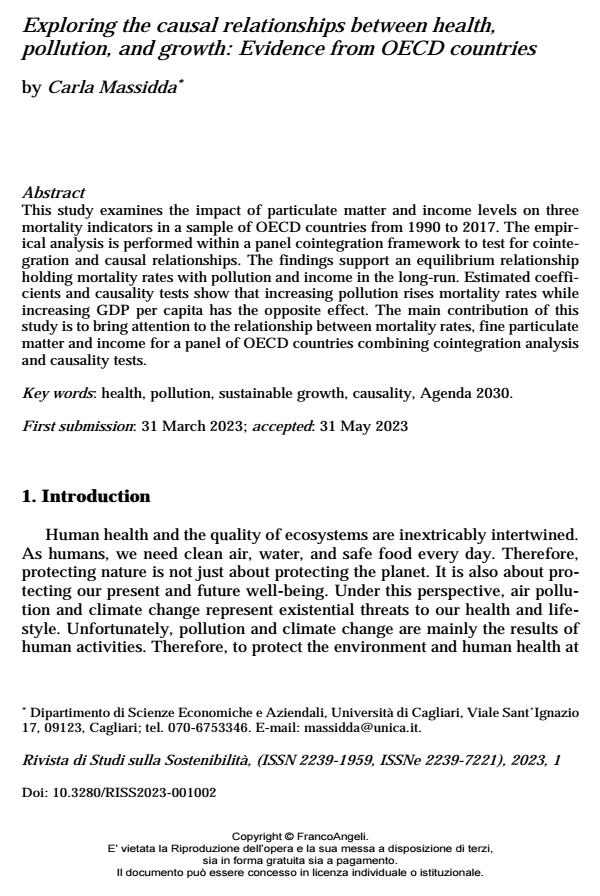Exploring the causal relationships between health, pollution, and growth: Evidence from OECD countries
Journal title RIVISTA DI STUDI SULLA SOSTENIBILITA'
Author/s Carla Massidda
Publishing Year 2023 Issue 2023/1
Language English Pages 16 P. 13-28 File size 140 KB
DOI 10.3280/RISS2023-001002
DOI is like a bar code for intellectual property: to have more infomation
click here
Below, you can see the article first page
If you want to buy this article in PDF format, you can do it, following the instructions to buy download credits

FrancoAngeli is member of Publishers International Linking Association, Inc (PILA), a not-for-profit association which run the CrossRef service enabling links to and from online scholarly content.
This study examines the impact of particulate matter and income levels on three mortality indicators in a sample of OECD countries from 1990 to 2017. The em-pirical analysis is performed within a panel cointegration framework to test for cointegration and causal relationships. The findings support an equilibrium rela-tionship holding mortality rates with pollution and income in the long-run. Esti-mated coefficients and causality tests show that increasing pollution rises mortali-ty rates while increasing GDP per capita has the opposite effect. The main contri-bution of this study is to bring attention to the relationship between mortality rates, fine particulate matter and income for a panel of OECD countries combining coin-tegration analysis and causality tests.
Keywords: health, pollution, sustainable growth, causality, Agenda 2030
Carla Massidda, Exploring the causal relationships between health, pollution, and growth: Evidence from OECD countries in "RIVISTA DI STUDI SULLA SOSTENIBILITA'" 1/2023, pp 13-28, DOI: 10.3280/RISS2023-001002